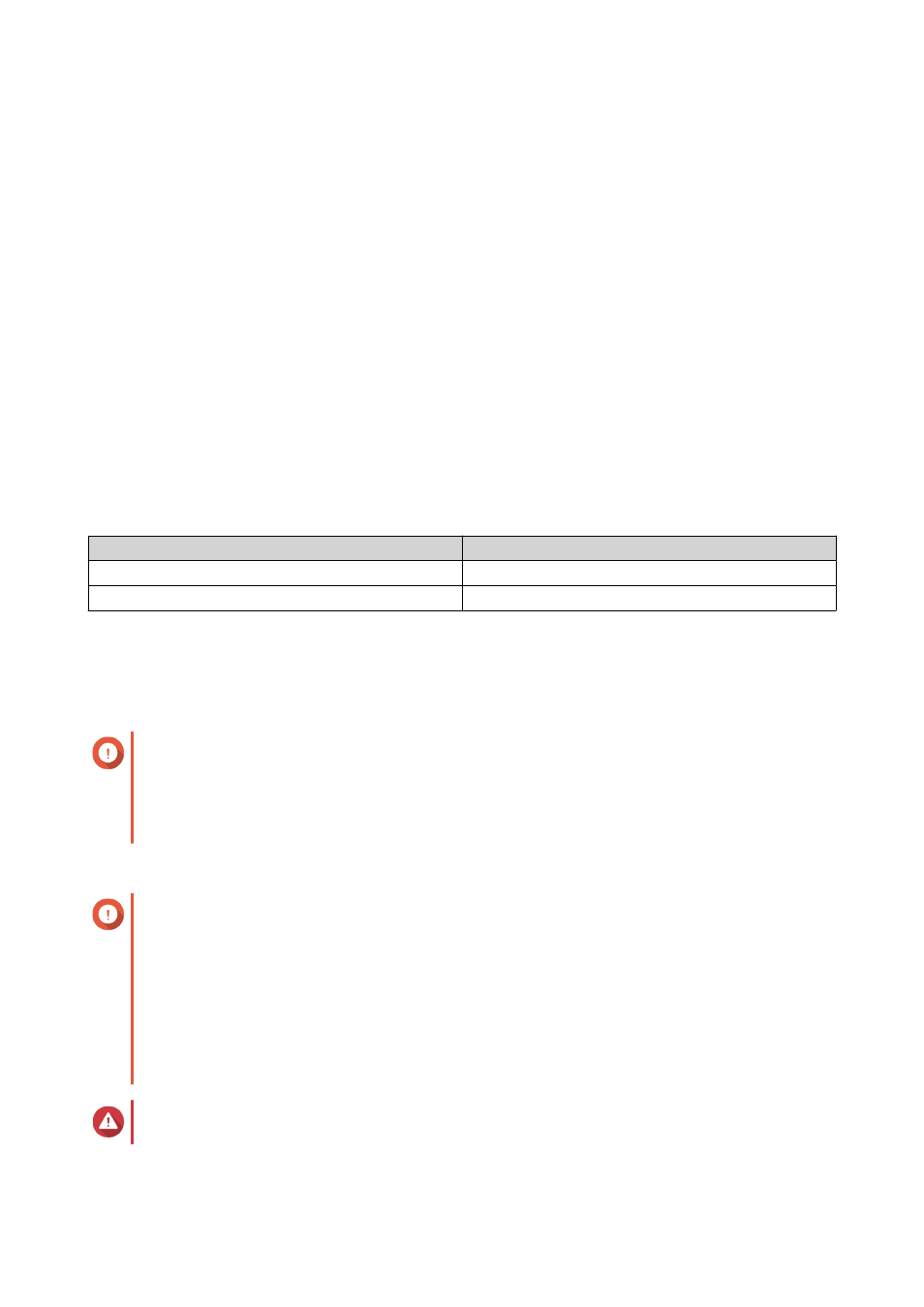Creating a storage pool – QNAP TVS-472XT 4-Bay NAS Enclosure User Manual
Page 56

• Disks from connected expansion units can be mixed with disks installed in the NAS to form a storage
pool.
• Extra disks can be added while the storage pool is in use, increasing storage capacity without
interrupting services.
• Qtier provides auto-tiering when a storage pool contains a mix of SATA, SAS, and SSD disks. Qtier
automatically moves frequently accessed hot data to the faster SSDs, and infrequently accessed cold
data to the slower disks.
• Snapshots can be used with storage pools. Snapshots record the state of the data on a volume or
LUN at a specific point in time. Data can then be restored to that time if it is accidentally modified or
deleted.
• Multiple RAID 5 or RAID 6 groups can be striped together using RAID 0 to form a RAID 50 or RAID 60
storage pool.
Creating a Storage Pool
1. Go to Storage & Snapshots > Storage > Storage/Snapshots .
2. Perform one of the following actions.
NAS State
Action
No volumes or storage pools
Click New Storage Pool.
One or more volumes or storage pools
Click Create, and then select New Storage Pool.
The Create Storage Pool Wizard window opens.
3. Click Next.
4. Optional: Select an expansion unit from the Enclosure Unit list.
Important
• You cannot select disks from multiple expansion units.
• If the expansion unit is disconnected from the NAS, the storage pool becomes inaccessible
until it is reconnected.
5. Select one or more disks.
Important
• For data safety, you cannot select disks that have the status
Warning
.
• The status
In Use
means that a disk is currently formatted as an external disk, and may
contain current user data.
• If you select a disk with the status
In Use
, QTS will temporarily stop all disk storage
services on the NAS in order to unmount the disk, and then delete all data and partitions on
the disk.
Warning
All data on the selected disks will be deleted.
6. Select a RAID type.
QTS 4.4.x User Guide
Storage & Snapshots
55
